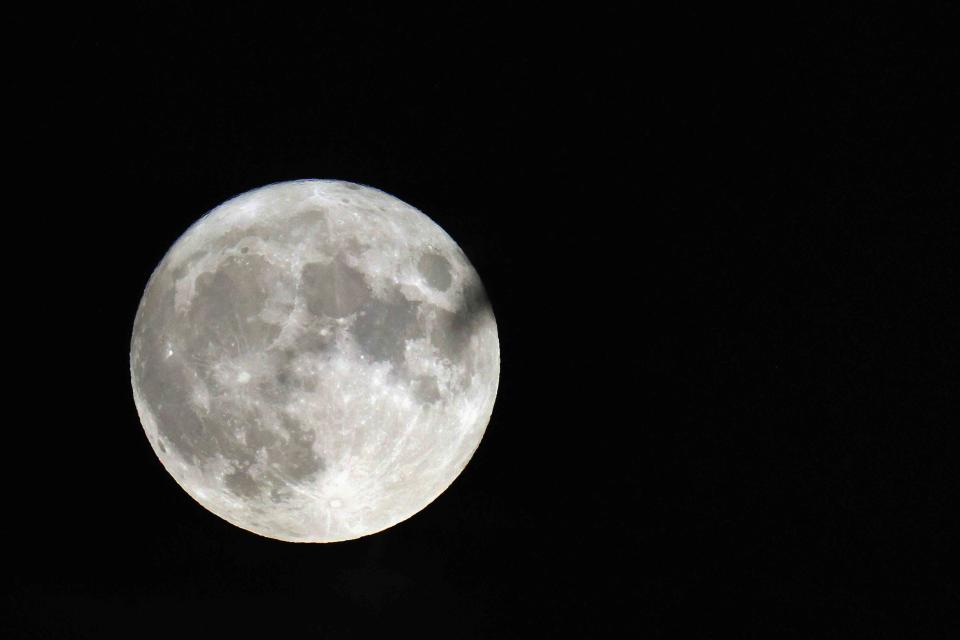Tonight's Supermoon Will Light Up the Sky — Here's When and How to See It
Everything to know about the Full Sturgeon Supermoon.

Getty Images
On Tuesday, sky-watchers will enjoy a vivid and shining beacon in the southeast sky: the second full supermoon of 2023. The Full Sturgeon Supermoon, named for the sturgeon fish that appear in the Great Lakes region in August, will reach its largest size at 2:32 p.m. ET, according to the Old Farmer’s Almanac. The lunar marvel will continue to appear exceptionally large and illuminated as it rises just after sunset.
Here’s where and how to watch the Full Sturgeon Supermoon this week, with some background on the phenomenon.
What Is a Supermoon?
Before we dive into spotting this month’s supermoon, let’s talk logistics. The supermoon spectacle occurs when the moon’s orbit reaches its closest point to our planet, known as its perigee, according to NASA. When this happens, the moon can appear roughly 14 percent larger than a full moon that’s located at the furthest point from Earth, known as the apogee.
The August 1 moon will be roughly 222,158 miles from our planet; the average distance between Earth and our space-rock neighbor is around 238,900 miles, according to EarthSky.org. The Full Sturgeon Supermoon, which earned its name from the Indigenous Anishinaabe communities in the Great Lakes region, will appear roughly 7 percent larger than average, per stargazing app SkySafari.
How to Watch Tonight's Full Sturgeon Supermoon
To catch the bright Full Sturgeon Supermoon, look to the southeast sky just after sunset. It will rise at 8:43 p.m. local time in New York City, according to Space.com. It will appear within the Capricornus constellation.
To amplify your astronomical sightseeing, look to the western sky as the sun sets to catch Venus, Mars, and Mercury in a row. The trio will slowly set as twilight descends.
Bookmark More Summer Supermoons
This isn’t the month’s only must-see supermoon. August 30-31 will welcome the year’s closest – and therefore largest and brightest — supermoon, the Blue Moon (the name for the second full moon in one calendar month, according to Starwalk.) The next Blue Supermoon won’t hit until spring 2026.
For more Travel & Leisure news, make sure to sign up for our newsletter!
Read the original article on Travel & Leisure.

